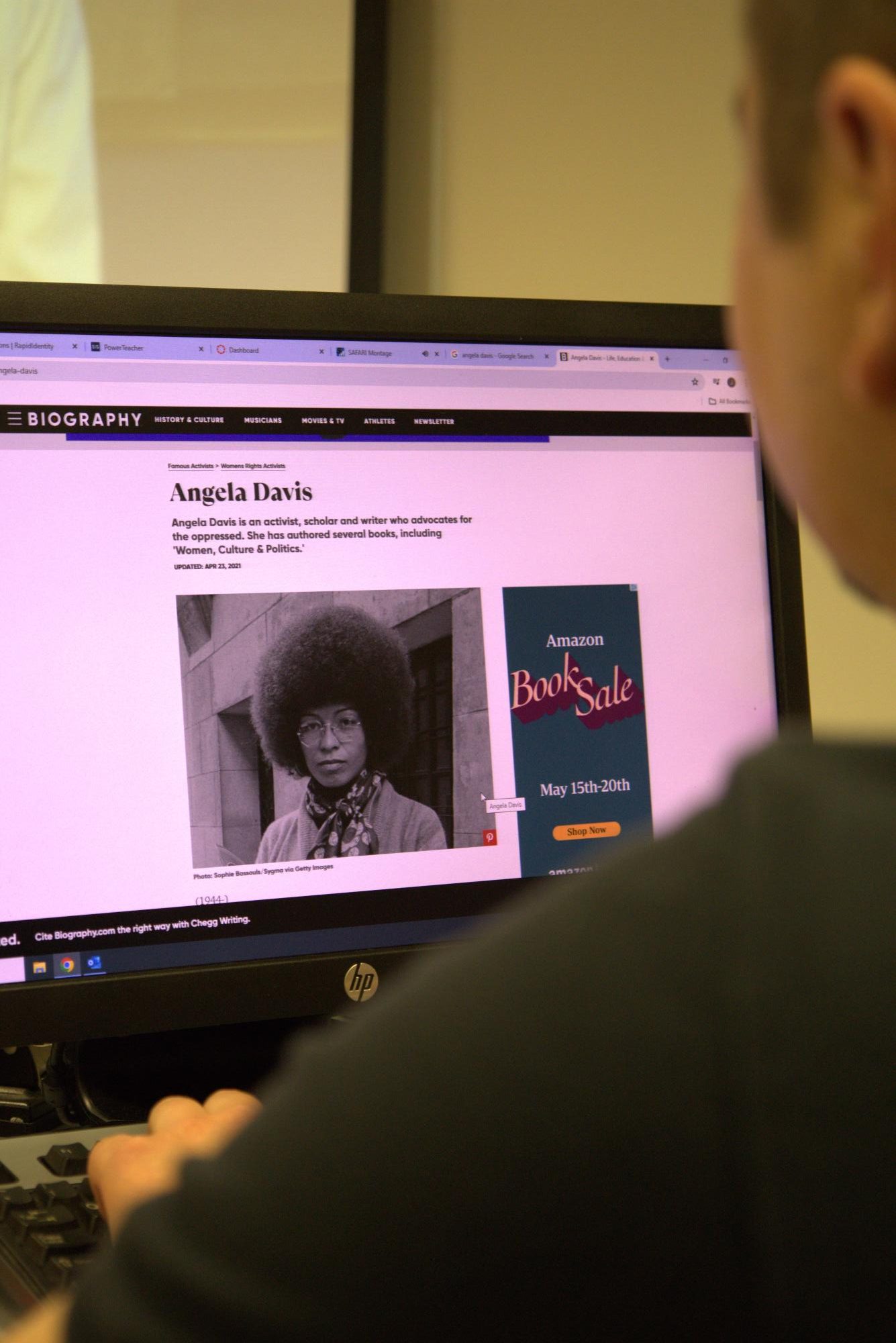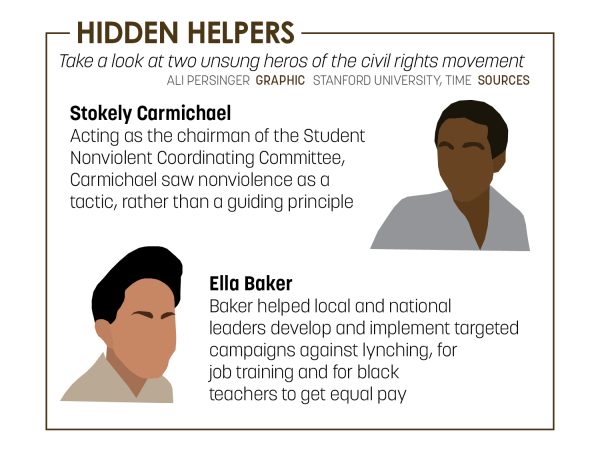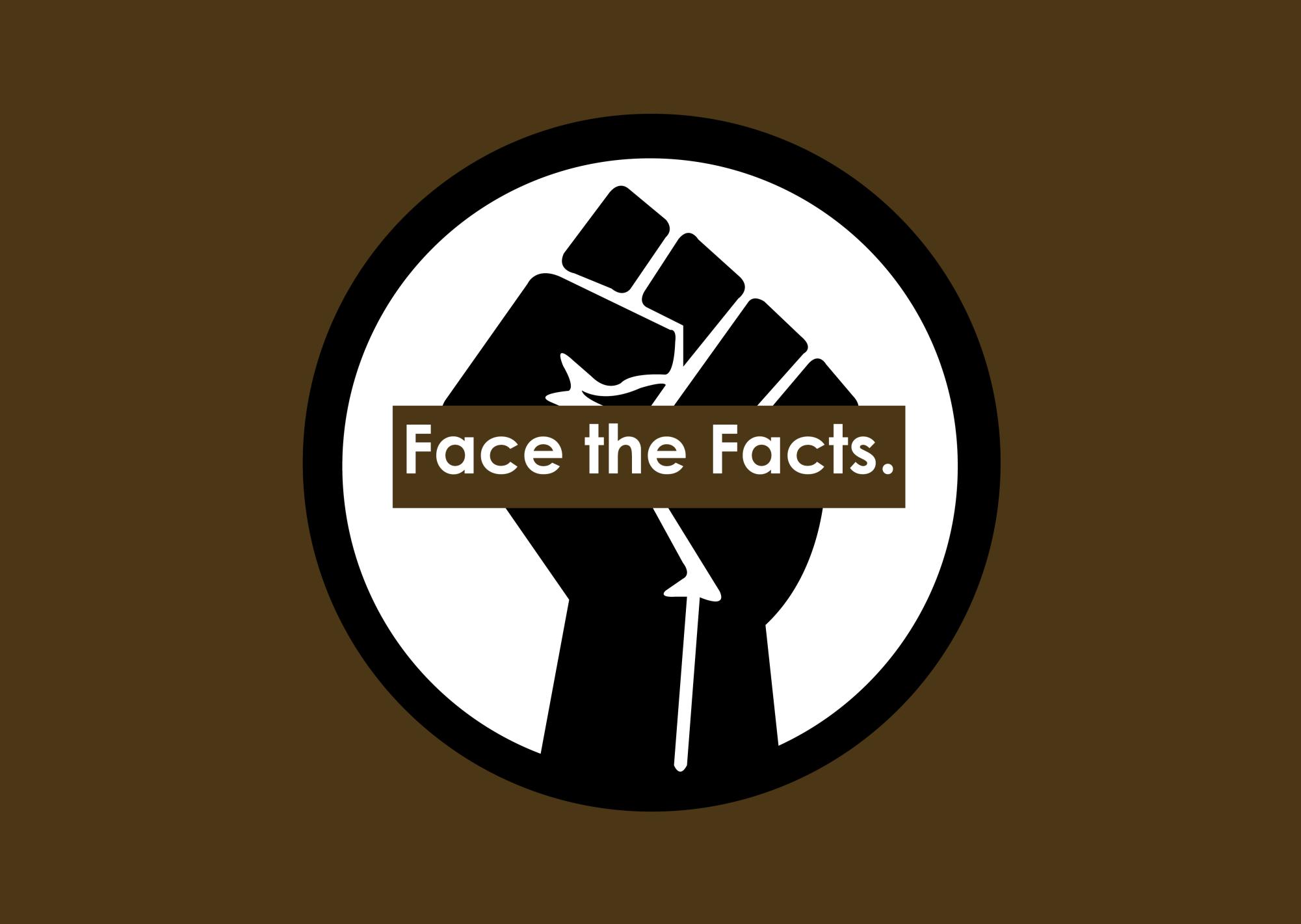Hayden Houston, Black Student Alliance (BSA) president and senior, has been learning about the civil rights movement for years. Houston comes from a family that values open discussion about Black history, and she said her background has helped her become more knowledgeable about the topic.
“I have a family of talkers. I’m always getting talked at,” Houston said. “I feel better having those conversations with my family now that I’m more well versed (with the civil rights movement), so it can be more of a conversation rather than just a lecture.”
Additionally, Houston said her family has a long history of being involved in the civil rights movement.
“A lot of my family has been (a part of) the civil rights movement as well,” Houston said. “My great-grandparents used to harbor runaways and Black musicians that needed a place to stay. My family has a lot of ties to the civil rights movement, and I think it’s really cool.”
However, Houston also said this school’s education of the civil rights movement was somewhat lacking in general education courses like U.S. history.
“In U.S. history, I feel like they do an okay job at just explaining the overall (topic of the civil rights movement), but I definitely feel like there are several misconceptions (about Black history) presented,” she said.
Houston is not the only one who thinks American general education is somewhat lacking regarding Black history education. According to a survey conducted by the Southern Poverty Law Center, only 8% of high school seniors can identify slavery as the root cause of the Civil War, indicating that most American high schools aren’t teaching their students the basics of the civil rights movement.
Classes offering insight into the civil rights movement
Although Houston said there are certain failings in her U.S. history class with regard to civil rights education, she also said she thinks her AP African American Studies class did an excellent job educating students about Black history.

(Nora Mariano)
“My sophomore year, I took regular African American studies, and this year I’m taking AP African American history. I feel like this year, since (I’m in) an AP class, there’s more information (presented),” she said. “It goes back to the very beginning (of African American history). It breaks it down.”
Houston also said AP African American Studies is one of her favorite classes.
“I really enjoyed this course; it was really liberating. It was a crazy experience to learn about my history,” she said. “For so long, history has been whitewashed, (but) African American history is American history.”
James Ziegler, AP African American Studies teacher, said one of the main goals of his class is to fill in gaps in African American history that were left by the teachings of U.S. history.
“First, we look at misconceptions about the civil rights movement, and one of the misconceptions is that (the movement) was isolated to the ‘50s and ‘60s. There was not a point in history where African Americans were not resisting (oppression), going back to 1619, where the first indentured servants were brought here from Africa,” Ziegler said. “For me, the civil rights movement has been going on for more than 400 years.”
Sophomore Santiago Garcia-Sylva, another student in Ziegler’s AP African American Studies class, said he valued the alternative perspective on U.S. history offered by the course.
“(The class) takes what we know from standard U.S. history and really focuses on the involvement of African Americans,” Garcia-Sylva said. “We’re often (taught) history from a White perspective, so that class really takes standard things we know but focuses on how things actually affected African Americans during (the civil rights movement). It’s honestly a really eye-opening class, and I feel like everyone should take a class similar to that at some point in their life.”
Misconceptions surrounding the civil rights movement
Ziegler also said his class focuses on clearing up fallacies about Black activist groups, such as the Black Panthers.
“There are so many misconceptions of what the Black Power movement was, especially with the Black Panther party. For most Americans, all they know about the Black Panther party (is that) they were carrying guns on the street. They weren’t going around attacking white people or attacking police. They were (advocating for) armed self-defense,” Ziegler said.
Ziegler also added that the Black Panther party did a lot of good for society that is often glossed over by U.S. history classes.
“(Armed self defense) was just one small element of the Black Panther party. People don’t realize that (the majority) of what they did was good. They provided breakfast every day for 10,000 school children, which helped inspire the government’s Head Start program. Because a lot of Black communities didn’t have access to adequate healthcare, (the Black Panthers) would do things like free screenings for sickle cell anemia, which (positively) impacted the African American population. They would do things like free clothing drives. They would do things like after-school tutoring programs for kids. Trying to deconstruct some of the myths around Black Power figures (who) were demonized (is crucial).”

Houston said she agreed with Ziegler about there being negative misconceptions about the Black Panthers that her U.S. history did not address.
“I definitely feel like there’s just a misconstrued image of the Black Panther party and other Black rights parties,” she said. “They weren’t violent, they argued against violence.”
Garcia-Sylva said the class also took the time to clarify several oversimplifications taught by most U.S. history classes.
“For the civil rights movement, we (did) an in-depth analysis of how it was organized and the different groups involved, and the involvement of women,” he said. “Most of the time, we’re (taught) an oversimplification of the civil rights movement, (such as) the basic teachings of Martin Luther King Jr., but in this class, we dive deeper into actual organizations and how people resisted Jim Crow laws, even before the actual civil rights movement. We’re also taught about how the FBI was involved in the movement, so overall, it’s just a deeper dive into how everything was structured and how organized everything was.”
Education about civil rights from the BSA
Houston said she uses the knowledge she has gained from her home life and her AP African American Studies alike to help educate members of the BSA about the civil rights movement.
She said, “I feel like, especially last semester, educating people (about the civil rights movement) was our main focus (for the BSA). (This year), we’ve been trying to make (the BSA) more hands-on and go on more field trips. We’ve been to a museum and this art gallery. We also went to Butler University for a Black leadership (seminar). (We’ve done) some super cool and fun activities this semester, but last semester, our main focus was educating people.”
Additionally, Houston said the BSA emphasizes creating a safe and fun environment for students, along with educating them about Black history and culture.
“As the president (of the Black Student Alliance), I work with the other members to figure out what activities we want to do together as a club, to bring people together more and create a closer (environment) and make people feel comfortable, so if they have issues within the school, they can bring those issues to the (attention of the) BSA,” Houston said. “That’s our main goal as presidents; to create a safe space (for others).”
A well-rounded education
Houston said, all in all, she thinks it’s important to educate students about the civil rights movement to raise awareness for how much Black people contributed to America.
“I would like people to know that there were a lot more women involved (in the civil rights movement than people realize). From the beginning of this country, Black people really built this country,” Houston said. “Genuinely. I wish a lot of people knew that (Black people) contributed to this country. And I wish we had the same amount of representation (as our White counterparts).”
Ziegler said he shared a similar point of view.
“A lot of people don’t realize that, in the civil rights movement, there was not a point in time where law enforcement was not weaponized against Black Americans,” Ziegler said. “Trying to dispel some of the misconceptions and things that have pretty much been Whitewashed out of our textbooks and curriculums (is important), because I think if we don’t know our true history, then we’re never going to be able to address the issues we’re dealing with today.”





